
Feel free to add tags, names, dates or anything you are looking for
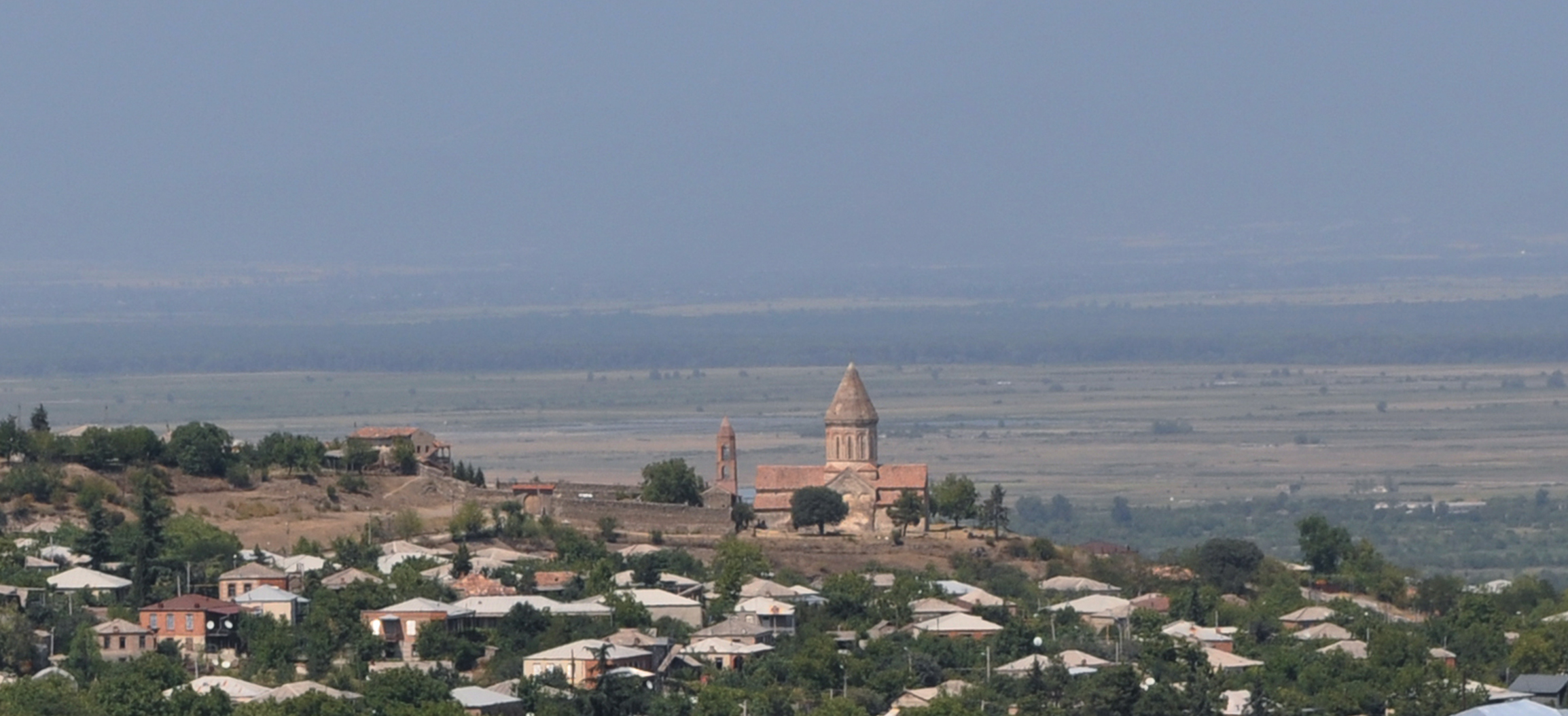

Khirsa Monastery, located in the village of Tibaani in Sighnaghi Municipality, Kakheti Province, is one of the oldest monastic foundations in Georgia. It was established in the mid-sixth century by St. Stephen, one of the group of monks known as the “Thirteen Syrian Fathers.” The Church of St. Stephen, standing at the center of the precinct, reflects the monastery’s turbulent history. With its irregular forms and walls constructed from various materials, it bears traces of at least four major construction periods.
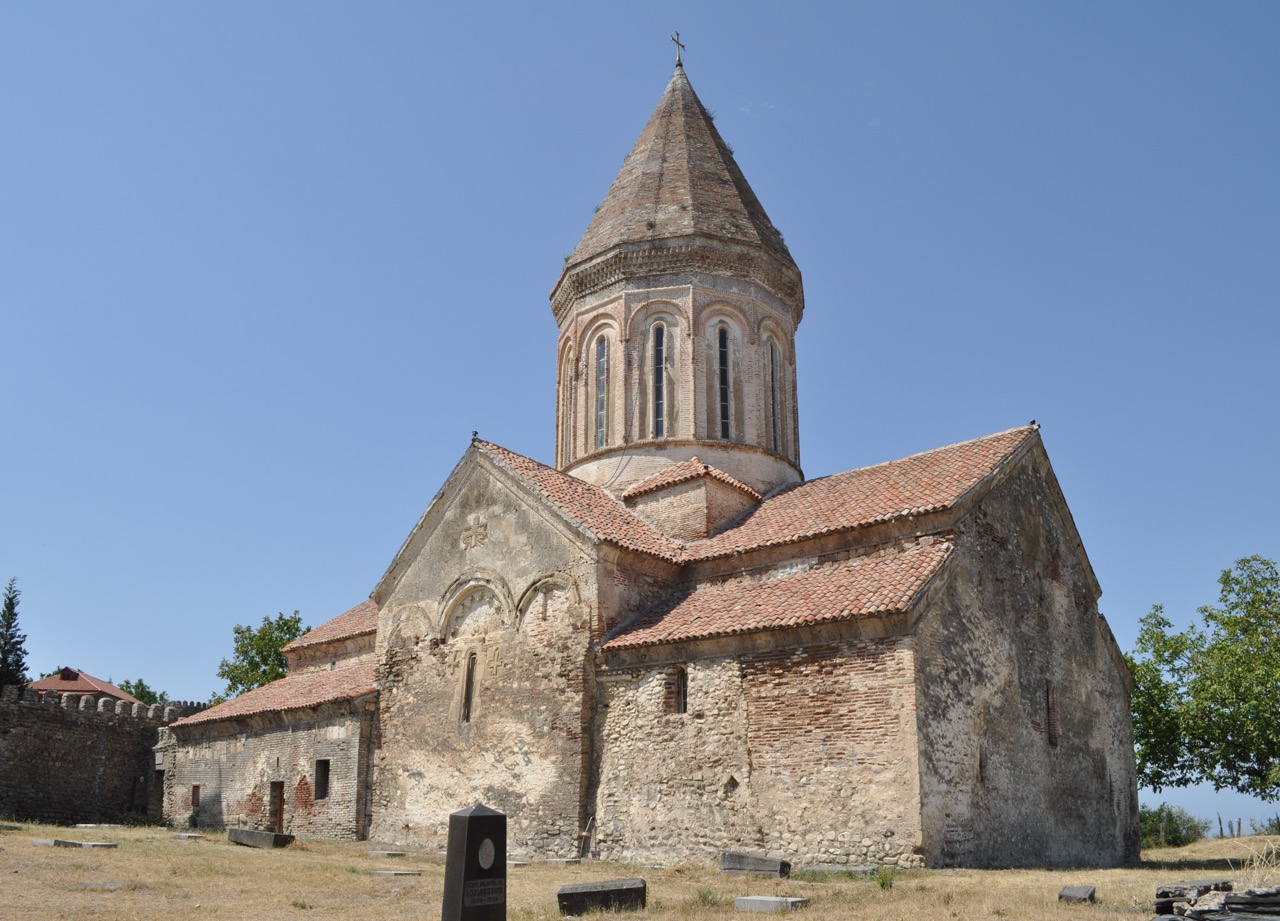
Khirsa Church from the southeast
The first church, built at the monastery’s founding in the sixth century, was a basilica with four pairs of T-shaped piers. Both its nave and narrow aisles were vaulted. The basilica was constructed using well-hewn large sandstone blocks.
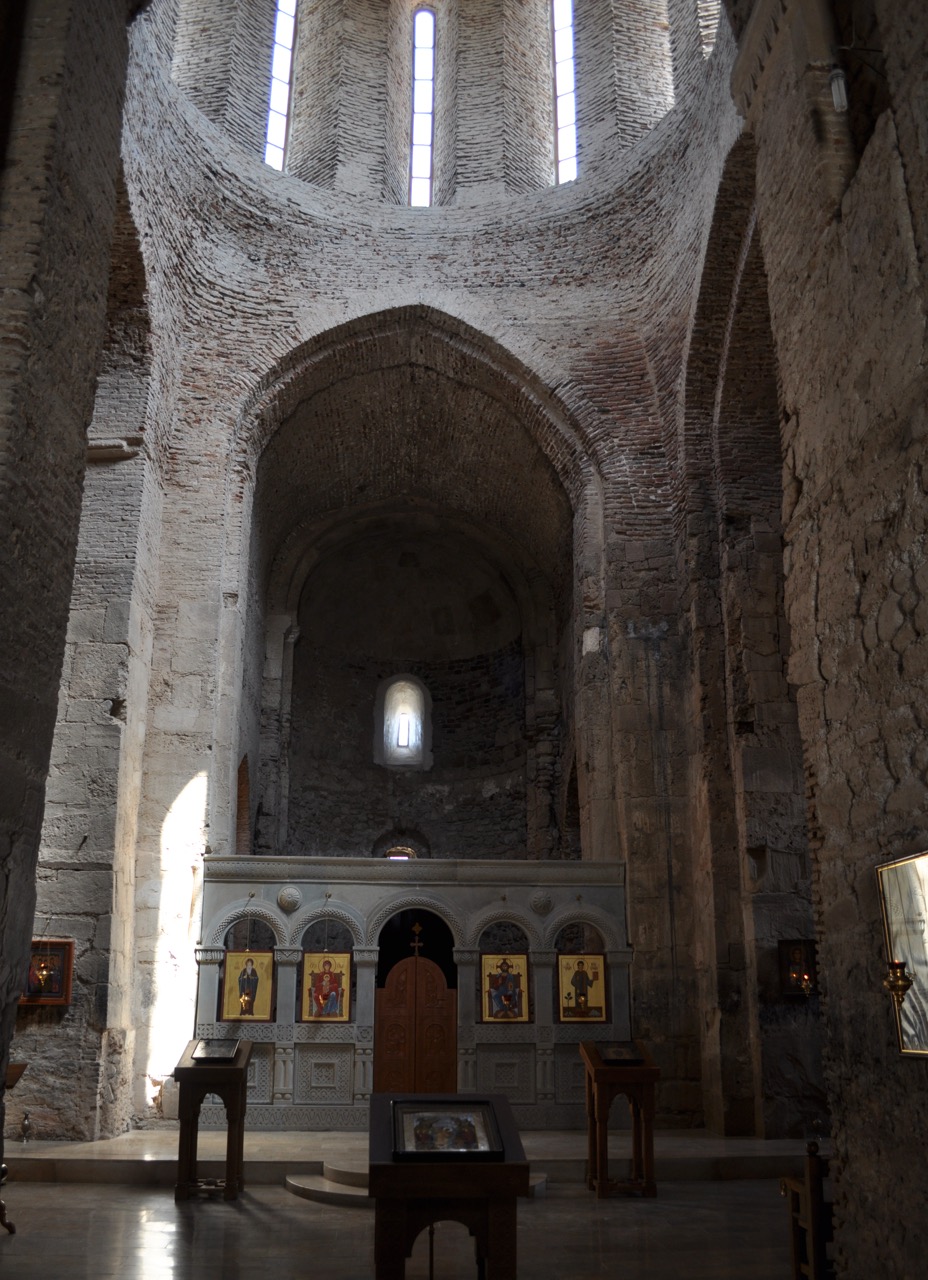
Interior view looking east
In the late tenth century, the church underwent significant reconstruction, completed in 996, as recorded in an inscription now inserted upside down inside the church. The original basilica was transformed into a cross-domed structure with a complex layout. The piers of the initial basilica, along with some sections of its walls, were incorporated into the new building. The sanctuary apse retained its original horseshoe-shaped plan, though its wall was later rebuilt.

Squinch-pendentive in the southwestern corner of the central bay
For the transition from the central square bay to the circular base of the dome’s drum, hybrid structural forms—squinches inserted into pendentives—were used. This feature has survived in the southwestern corner, while in the other three corners, it was later replaced with plain pendentives.
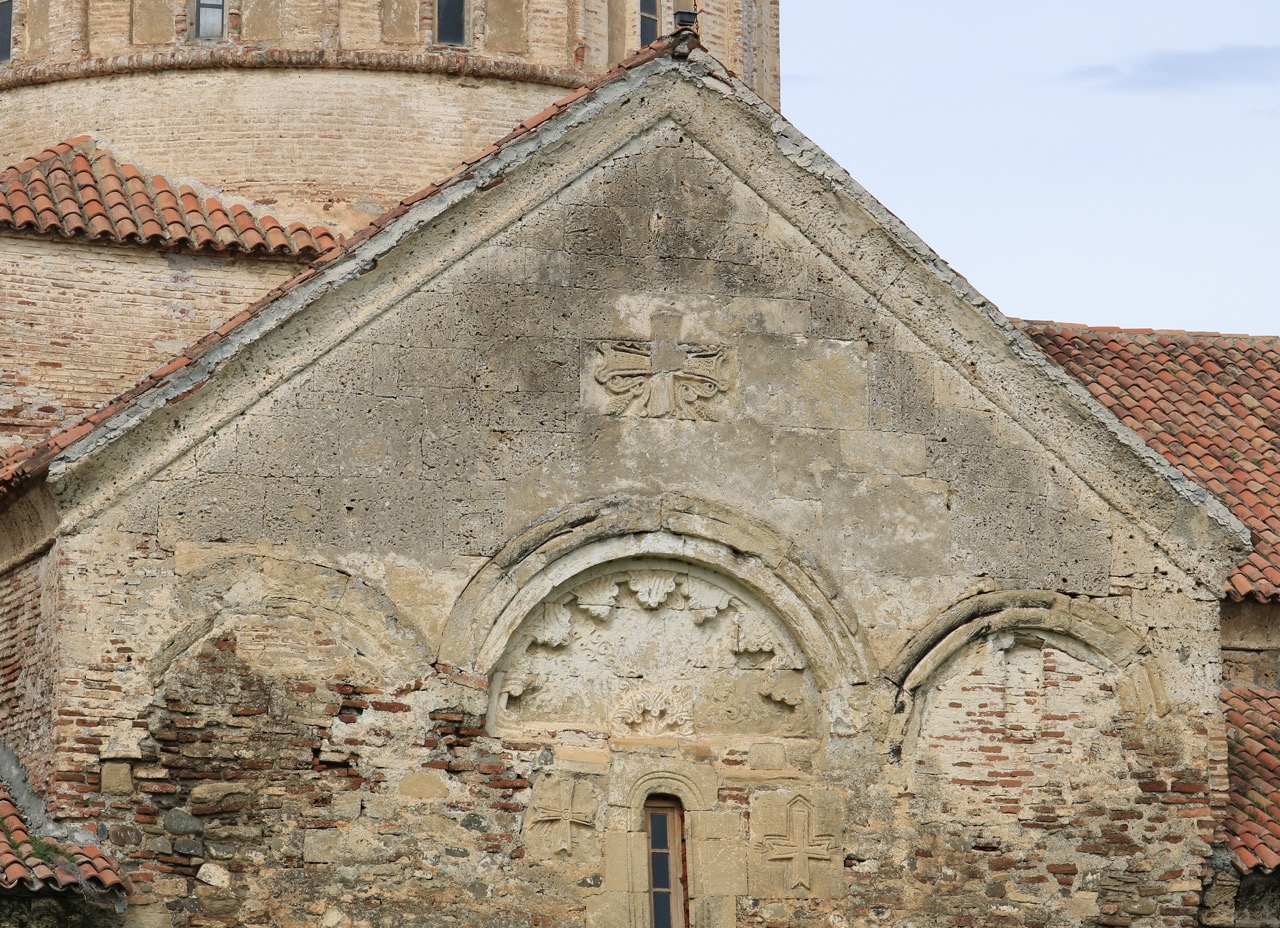
Upper part of the southern façade
A few decades later, the church was renovated by Gagik I, King of Kakheti (1037–1058), and Archbishop George. Their contribution is most evident on the southern façade, which was adorned with splendid decorations, including blind arches and foliage ornaments. A fragment of a flourishing cross, inscribed with the names of the donors, is embedded in the same façade above the blind arches.
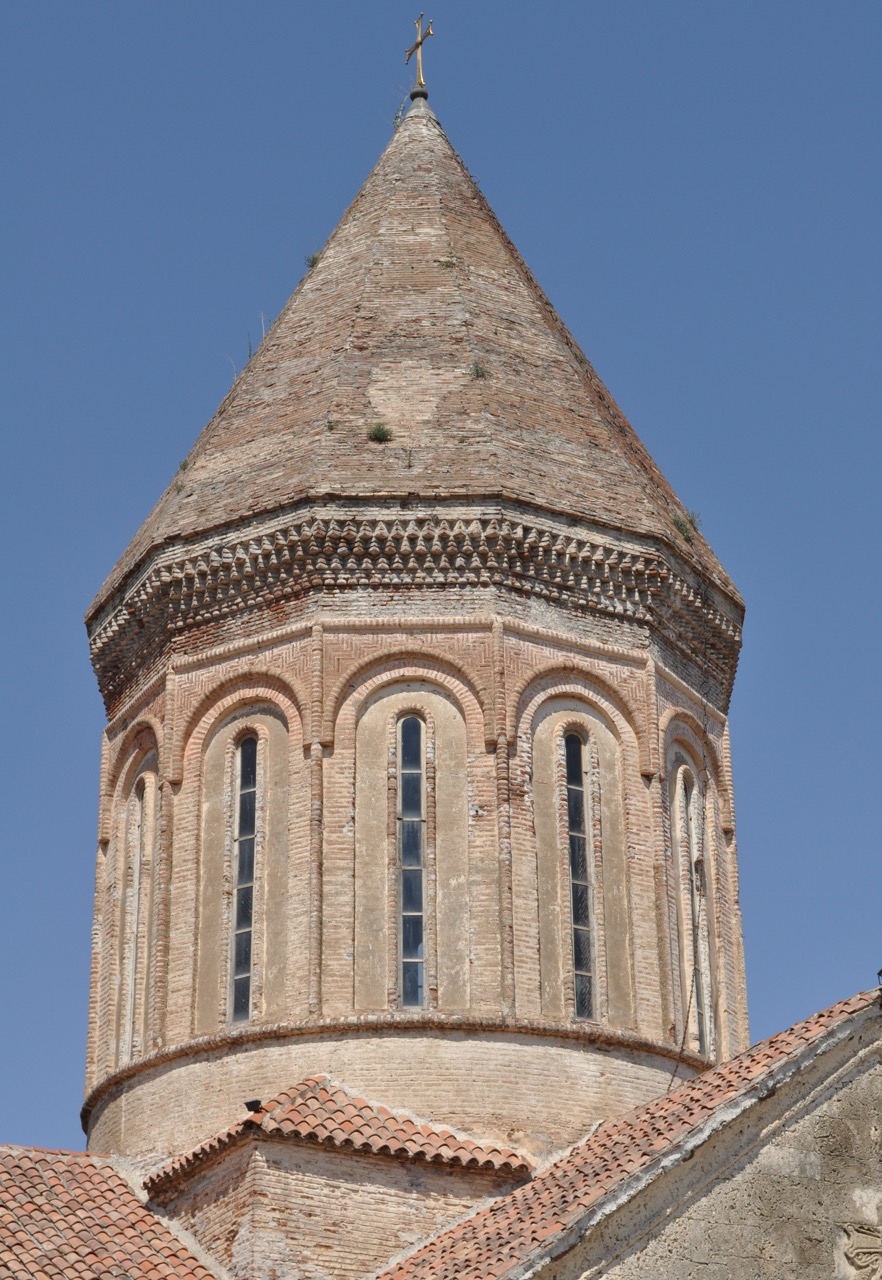
Dome
By the sixteenth century, Khirsa Church had fallen into ruin. It was restored by King Leon I of Kakheti (1520–1574). The dome, with its tall drum and conical roof, as well as the vaults and various sections of the walls, date from this period. Restoration work was carried out using brick.

Church from the southwest
King Leon also enclosed the monastic courtyard within a circuit wall. A tall, three-storey bell tower and dwelling houses were added in the late nineteenth and early twentieth centuries. From 2008 to 2020, rehabilitation and conservation works were carried out in the monastery. Today, Khirsa is an active monastery.

Khirsa monastery, general view

Khirsa monastery, general view